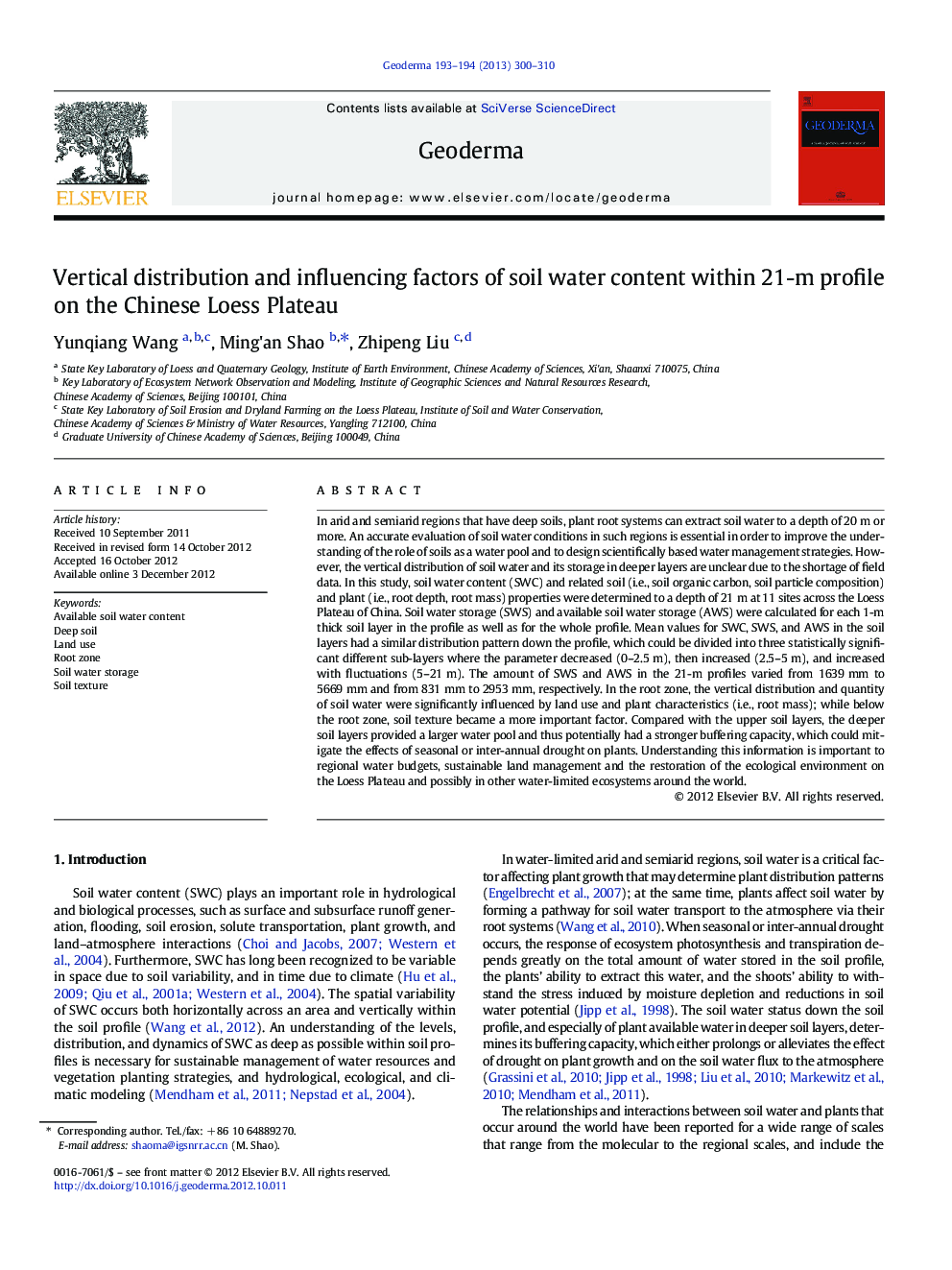| کد مقاله | کد نشریه | سال انتشار | مقاله انگلیسی | نسخه تمام متن |
|---|---|---|---|---|
| 4573694 | 1629490 | 2013 | 11 صفحه PDF | دانلود رایگان |

In arid and semiarid regions that have deep soils, plant root systems can extract soil water to a depth of 20 m or more. An accurate evaluation of soil water conditions in such regions is essential in order to improve the understanding of the role of soils as a water pool and to design scientifically based water management strategies. However, the vertical distribution of soil water and its storage in deeper layers are unclear due to the shortage of field data. In this study, soil water content (SWC) and related soil (i.e., soil organic carbon, soil particle composition) and plant (i.e., root depth, root mass) properties were determined to a depth of 21 m at 11 sites across the Loess Plateau of China. Soil water storage (SWS) and available soil water storage (AWS) were calculated for each 1-m thick soil layer in the profile as well as for the whole profile. Mean values for SWC, SWS, and AWS in the soil layers had a similar distribution pattern down the profile, which could be divided into three statistically significant different sub-layers where the parameter decreased (0–2.5 m), then increased (2.5–5 m), and increased with fluctuations (5–21 m). The amount of SWS and AWS in the 21-m profiles varied from 1639 mm to 5669 mm and from 831 mm to 2953 mm, respectively. In the root zone, the vertical distribution and quantity of soil water were significantly influenced by land use and plant characteristics (i.e., root mass); while below the root zone, soil texture became a more important factor. Compared with the upper soil layers, the deeper soil layers provided a larger water pool and thus potentially had a stronger buffering capacity, which could mitigate the effects of seasonal or inter-annual drought on plants. Understanding this information is important to regional water budgets, sustainable land management and the restoration of the ecological environment on the Loess Plateau and possibly in other water-limited ecosystems around the world.
► Soil water distributions in eleven 21-m soil profiles were described and analyzed.
► SWC, SWS and AWS distributions were divided into 3 distinct sub-layers.
► Soil water amounts differed greatly among the sub-layers and the sampling sites.
► Land use dominated the distribution and quantity of soil water in the root zone.
► Soil texture significantly affected soil water below the root zone.
Journal: Geoderma - Volumes 193–194, February 2013, Pages 300–310